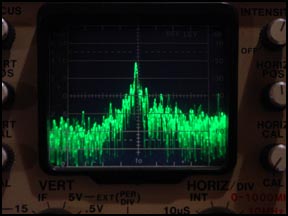 Someone interested in Cold War-era technical surveillance and technical surveillance countermeasures might enjoy the Spying on Spies article in the July 22, 2008, Scientific American online. Follow the link View slide show to see some of the devices recovered and the equipment used to detect them.
Someone interested in Cold War-era technical surveillance and technical surveillance countermeasures might enjoy the Spying on Spies article in the July 22, 2008, Scientific American online. Follow the link View slide show to see some of the devices recovered and the equipment used to detect them.
July 25, 2008
Who Was Listening and Watching?
2 Comments
RSS feed for comments on this post.
Sorry, the comment form is closed at this time.

Bill that’s very interesting. I watched the slide show and can only imagine the outrageous comparison to what is probably being used now.
Comment by mary — July 25, 2008 @ 2:50 pm
Mary,
On the positive (technical surveillance) side, devices have always tended to be circumstantial adaptations of existing products. For example, an in-ear hearing aid like many people wear is little more than a battery-powered audio amplifier with very small transducers (mic and speaker). If you bury a few of those in a room and give them a conductive or RF link out, you’ve got an effective listening device. The wood-block transmitter in the slide show had some special features that allowed it to be more effective, but in the world of physics, it was still not much more than a radio-frequency transmitter. Nowadays, IP-addressable devices and spread spectrum transmitters open the options to the positive specialist (your cellular telephone is very likely a spread-spectrum transmitter). Developments in almost all consumer electronics technology are a boon to the positive specialist and a bane to the TSCM engineer.
On the defensive (technical surveillance countermeasures or TSCM) side, it’s much more difficult. The people relying on detection alone are fighting a losing battle, especially in an area secured and controlled by the bad guys. The detection equipment shown in the slide show was somewhat specialized and modified, but for example the Tektronix 492 RF spectrum analyzer was an off-the-shelf product commonly used in high-end laboratories. The spectrum analyzer is designed to visually present and allow an engineer to measure the parameters of a radio-frequency signal’s components. The spectrum analyzer doesn’t care if the RF signal is coming from a surveillance transmitter or a piece of electronic equipment under test. A signal is a signal is a signal…
Comment by Bill — July 25, 2008 @ 4:36 pm